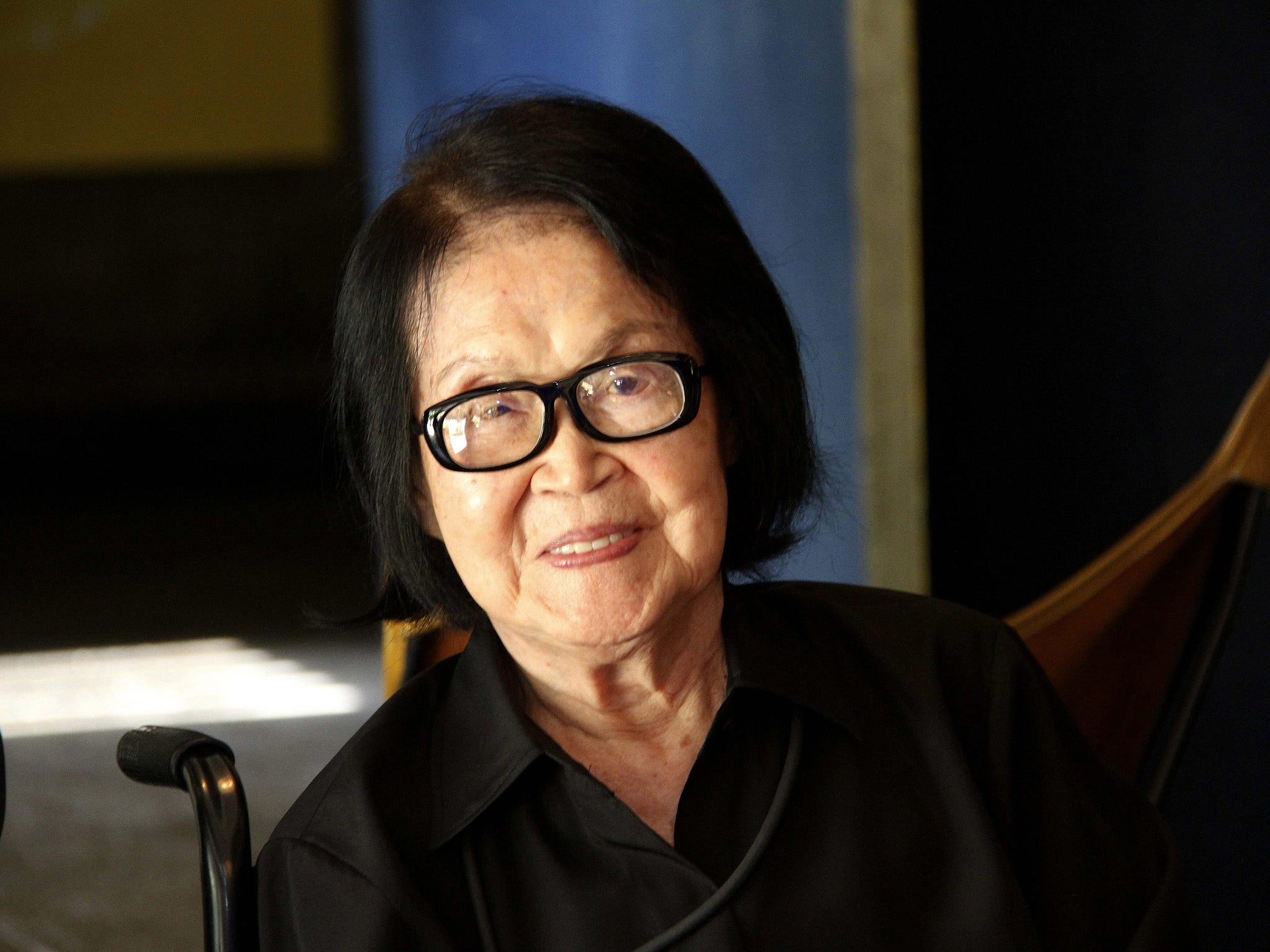Tomie Ohtake: Painter and sculptor who moved to Brazil, where she became noted for her public artworks
A famous piece of her work, a wave-shaped sculpture commemorating Japanese immigrants to Brazil, that resembles a row of oversized ribbons, sits next to a major thoroughfare in Sao Paulo

Tomie Ohtake, who has died at the age 0f 101, was a celebrated Japanese-Brazilian artist known for her bold, primary colored abstract paintings and gravity-defying monumental sculptures. Renowned for her oversized paintings and airy, cleverly balanced sculptures, Ohtake was considered among Brazil’s most important contemporary artists.
A statement from Rio de Janeiro state’s culture secretary said “we have lost one of the most meaningful names in abstractionism in the country and in the world. Tomie was an artist who beautifully brought together cultures, colors and geometry, mixing the red of Japan with the yellow of her adopted country,” said the statement.
Born in Kyoto in 1913, Ohtake travelled to Brazil in 1936 to visit a relative. In the uncertainty that preceded the Second World War, she decided to stay on in Sao Paulo, marrying and having two children.
In her late 30s, her children largely grown, Ohtake began to paint. After an early career focusing on figurative subjects, she found fame with abstract paintings in an eye-popping palette, first exhibiting in 1957. Her large-scale sculptures of curves and curlicues also became fixtures of the cityscape of Sao Paulo and other Brazilian cities.
Her most emblematic work includes a series of mosaic murals in shades of her hallmark colors, red, yellow and green, that adorn the Consolacao stop on Sao Paulo’s metro. Another famous work, a wave-shaped sculpture commemorating Japanese immigrants to Brazil, that resembles a row of oversized ribbons, sits next to a major thoroughfare in her adopted city.
Ohtake worked till the end of her life, going to her studio three times a week until well after her centenary. Her son, Ruy Ohtake, is a noted architect.
Tomie Ohtake, artist: born Kyoto 21 November 1913; married (one son); died Sao Paulo 12 February 2015.
Join our commenting forum
Join thought-provoking conversations, follow other Independent readers and see their replies
Comments